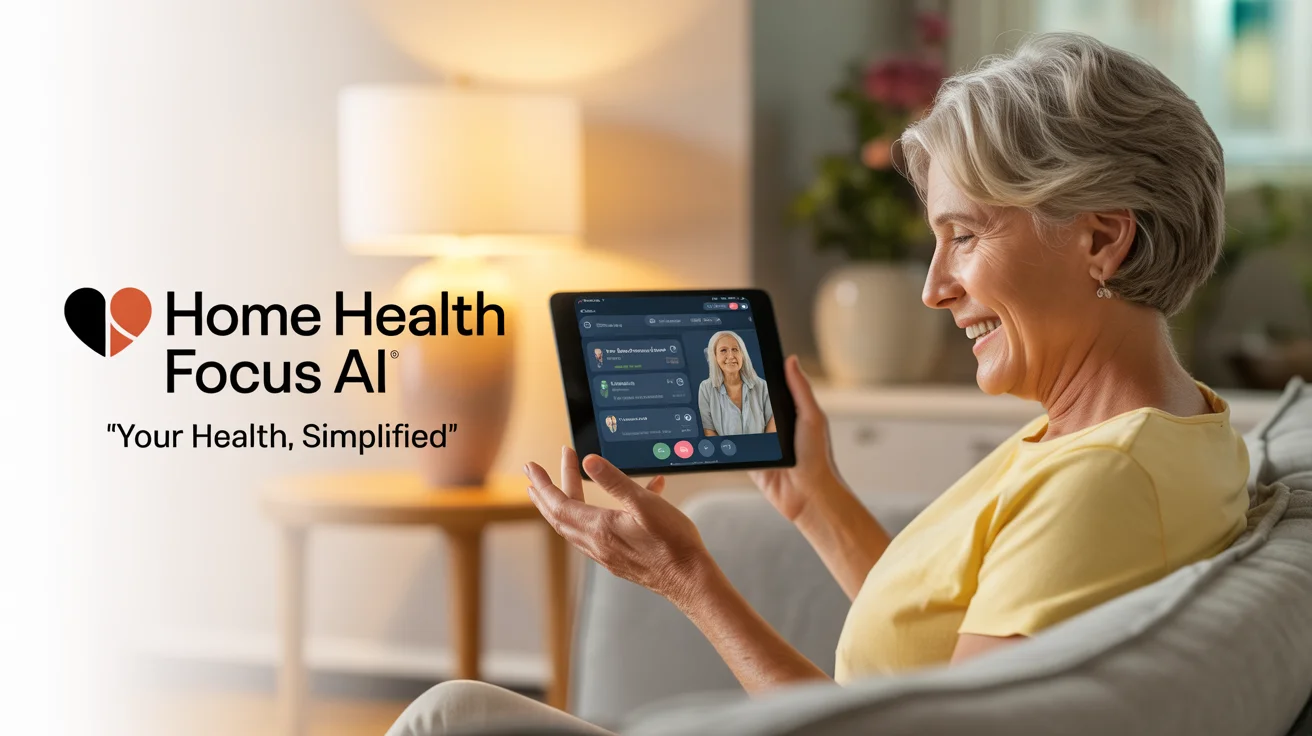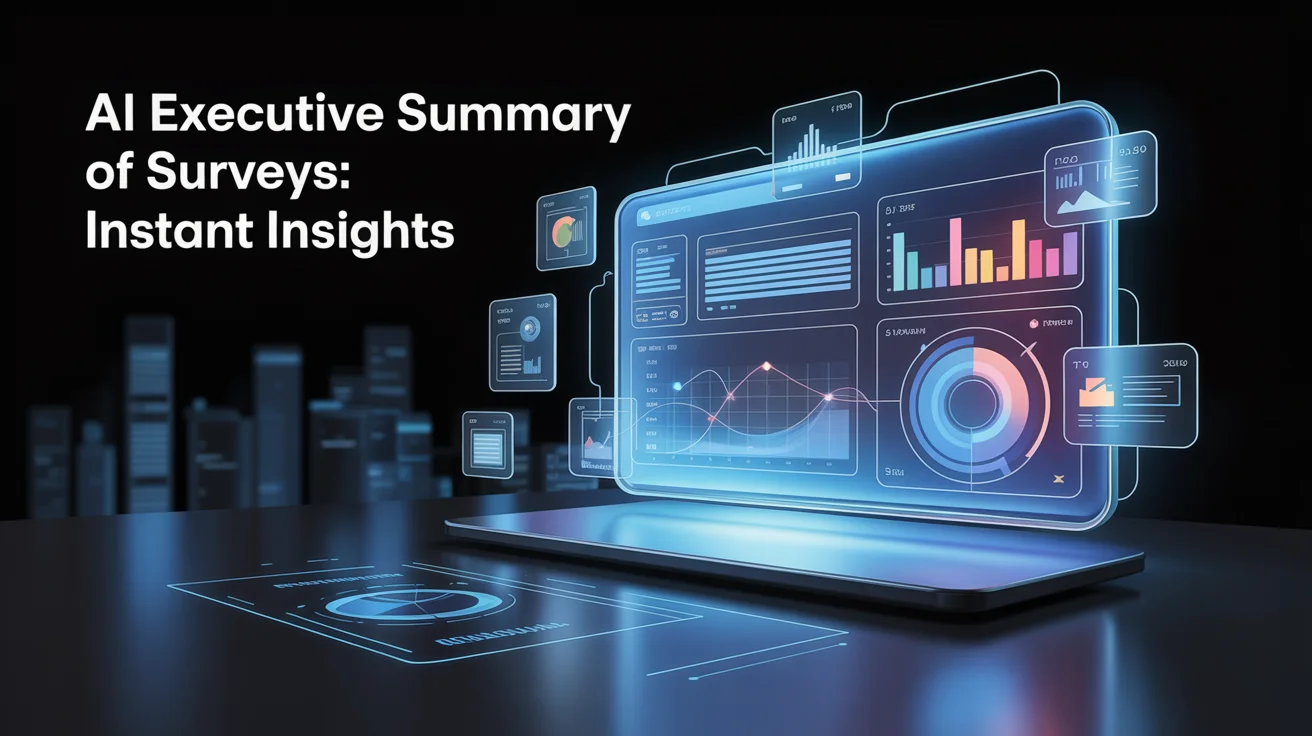Let’s be real – remember when fitness trackers just counted steps? Those days are long gone. The healthcare world has changed, and wearable technology isn’t just about hitting your daily step goals anymore. Nearly a quarter of Americans now depend on these devices to track everything from heart rhythms to sleep patterns.
You know what’s really eye-opening? The wearable tech market is set to hit $111 billion by 2027. That’s not just a number – it’s a clear sign that these devices are becoming as essential as stethoscopes in modern healthcare. Doctors are using real-time health data to spot problems before they become serious, and patients are getting treatment plans tailored just for them.
Here’s what gets me excited: These aren’t just fancy gadgets. They’re powerful tools that help doctors keep track of chronic conditions, monitor patients from home, and make decisions based on actual data rather than guesswork. The hard truth? If you’re not paying attention to wearable healthcare tech, you’re missing out on a major shift in how doctors care for their patients.
Ready to discover how these devices are changing the game in healthcare? Let’s dive into the real-world applications and proven benefits that are making both doctors and patients rethink what’s possible in medical care.
The Evolution of Wearable Technology Healthcare
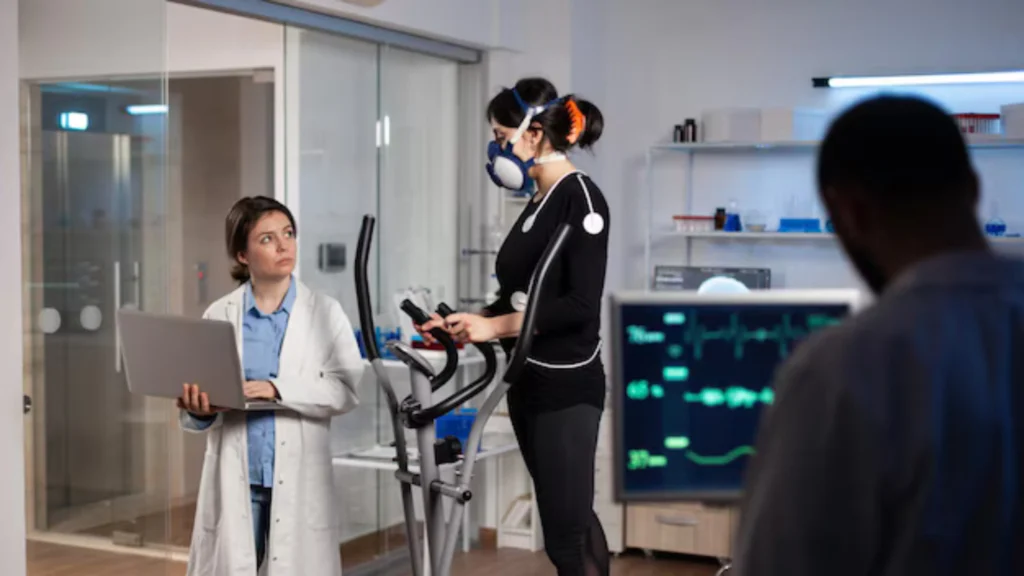
Remember those basic fitness trackers from the late 20th century? The healthcare world has come a long way since then. What started as simple step counters has evolved into sophisticated medical tools that give doctors incredible insights into your health.
From Simple Trackers to Advanced Medical Devices
You might find this hard to believe, but those calculator watches were actually the great-grandparents of today’s medical wearables. The global wearable medical devices market, valued at $35.60 billion in 2023, shows just how far we’ve come. These aren’t just fancy gadgets anymore – they’re tracking your heart rate, monitoring your sleep, and measuring vital signs with incredible accuracy.
Key Technological Breakthroughs
Let’s talk about the game-changers that made this possible. Some pretty amazing innovations have shaped where we are today:
- Smart clothing with built-in health sensors
- Patches that analyze your body’s markers in real-time
- Devices that keep an eye on your heart around the clock
- Sensors smart enough to catch diseases early
Here’s what’s really exciting: Scientists have created devices that feel like a second skin. Think about that – medical-grade monitoring that’s as comfortable as wearing a Band-Aid.
Current State of Medical Wearables
Want to know where we’re headed? The numbers tell an incredible story. The market is set to hit $151.80 billion by 2029, growing at a whopping 27.5%. But what does this mean for you?
These devices have become your personal health assistant. They’re constantly collecting vital signs, checking everything from your blood sugar to your heart rhythm. And thanks to AI, they’re getting smarter every day, offering insights that were impossible just a few years ago.
The real breakthrough? Today’s wearables can do things like take ECGs and measure blood oxygen levels. Even better, they’re talking directly to your medical records, making it easier for your doctor to keep track of your health.
Looking ahead, we’re seeing some mind-blowing innovations – sensors that sit on your teeth, smart contact lenses, and even electronic tattoos. With 50 million Americans already using home health monitoring, it’s clear these devices aren’t just a trend – they’re becoming an essential part of modern healthcare.
How Doctors Are Implementing Wearable Medical Devices
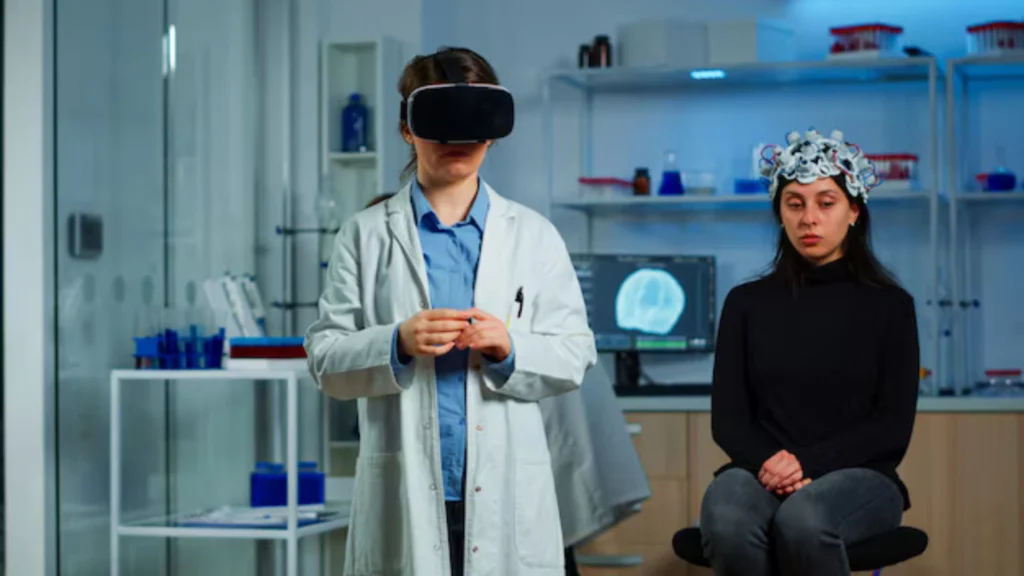
Let’s talk about what’s happening in doctor’s offices right now. Medical practices aren’t just experimenting anymore – they’re making wearables part of their daily routine. Take Family Doctors LLC in Swampscott, Massachusetts – their physicians regularly ask patients to share their health tracker data to make better treatment decisions.
Wearable Technology Healthcare: Integration with Clinical Workflows
You know how Apple has their Genius Bar? Well, medical institutions are creating similar tech support teams to help with device setup and troubleshooting. Here’s what’s really cool: Health systems like Kaiser Permanente and Ochsner have built entire care systems around wearable data, combining it with health coaching and smart medication management.
Want to know the scale of this change? We’re talking about more than 350 different wearable devices feeding data directly into patient records. That means your doctor can see your steps, active minutes, and calories burned right there in your chart, no matter which device you’re using.
Training and Adoption Challenges
Let’s be honest – it hasn’t all been smooth sailing. Doctors and their teams are facing some real challenges:
- Feeling overwhelmed by all the data coming in
- Worrying about keeping your information private and secure
- Making everything work with their existing systems
- Getting staff up to speed
- Managing implementation costs
Healthcare staff often tell me they’re drowning in data – and who can blame them? That’s why proper training isn’t just important, it’s essential. After all, what good is all this information if doctors can’t use it to make better decisions?
Success Stories from Medical Practices
But here’s where it gets exciting. Remember Ochsner Health System’s blood pressure program? 71% of patients using wearable devices hit their target blood pressure, compared to just 31% with traditional care. That’s not just a small improvement – it’s a game-changer.
The numbers don’t lie. Kaiser Permanente’s glucose monitoring program cut phone visit time in half, letting doctors help twice as many diabetes patients. Sure, getting started takes some investment, but results like these show it’s worth every penny.
Here’s something that might surprise you: A 2019 survey found that 30% of people were using wearables, and nearly half of them shared their data with their doctors. Think about what this means – instead of guessing about your exercise or sleep patterns, your doctor can see exactly what’s going on and give you personalized advice.
Wearable Technology Healthcare: Clinical Applications Transforming Patient Care
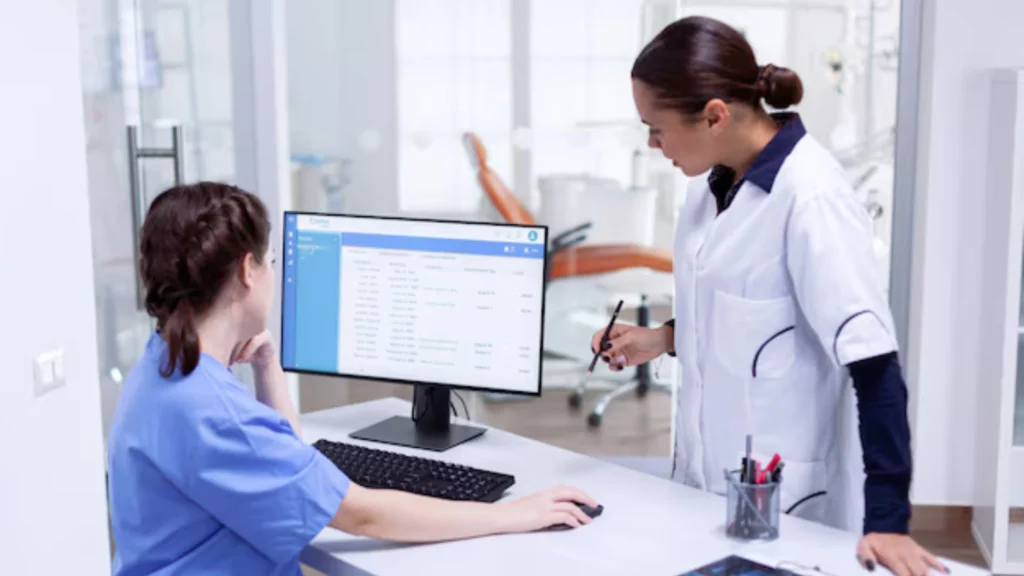
Let’s talk about something exciting happening in healthcare. Wearable devices aren’t just fancy gadgets anymore – they’re becoming powerful tools that help doctors manage complex health conditions and respond to emergencies faster than ever before.
Chronic Disease Management
Here’s a sobering truth: Chronic diseases are one of healthcare’s biggest challenges worldwide. But there’s good news – patients are taking control of their health like never before. Think of these wearable devices as your personal health assistant, giving you and your doctor real-time updates about your condition.
Want to know something impressive? Studies looking at 2,446 people with 18 different chronic conditions found that 50% of clinical trials showed real improvements in health outcomes. The results speak for themselves – from helping people manage type 2 diabetes to tracking Parkinson’s symptoms and even dealing with chronic back pain.
Remote Patient Monitoring Systems
Remember the old days when you had to visit the doctor for every little change in your condition? Those days are fading fast. A deep dive into 91 different studies showed that remote monitoring helps catch problems early and keeps people out of the hospital. Here’s what makes it so powerful:
- Spots trouble before it gets serious
- Helps doctors stay ahead of problems
- Keeps you out of the emergency room
- Gets you home from the hospital sooner
Here’s what really gets me excited: These systems aren’t just convenient – they’re saving money too. Take pulmonary rehab, for example. Using pedometers for guidance turned out to be much more cost-effective than traditional center-based programs.
Emergency Detection and Response
Now, this is where things get really interesting. Remember how we used to rely on someone being present during a medical emergency? These devices are changing that game completely. Take cardiac arrests outside hospitals – they affect 40 to 100 people per 100,000 globally.
The hard truth? About 40% of cardiac arrests happen without anyone around. But here’s where wearable devices become lifesavers – literally. They act as your personal emergency witness, automatically calling for help and sharing your location when seconds count.
And it’s not just heart problems. These devices are proving their worth in all sorts of emergency situations. Picture this: a simple device measuring your pulse wave can spot signs of shock in trauma patients before they become obvious. During infectious disease outbreaks, these tools become even more valuable, letting doctors monitor patients without risking exposure.
Wearable Technology Healthcare And Impact on Different Medical Specialties

You know how different doctors have different specialties? Well, they’re all finding unique ways to use wearable technology. Let’s see how these devices are changing the game across different areas of medicine.
Cardiology and Heart Monitoring
Heart doctors? They’re absolutely loving these devices. And for good reason – they’re incredibly accurate at catching heart problems. We’re talking about devices that can spot atrial fibrillation with 91-100% sensitivity and specificity compared to traditional ECG methods.
Here’s something mind-blowing: A study with 419,297 people found that smartwatches could catch heart problems before they got serious. These aren’t just heart rate monitors anymore – they’re tracking everything from heart rhythm changes to blood pressure and even fluid in your chest.
Diabetes Management
Remember the days of constant finger pricks for diabetes testing? Those days are fading fast. Today’s continuous glucose monitoring (CGM) devices are changing everything about diabetes care. Check out what these smart devices can do:
- Keep an eye on your sugar levels 24/7
- Warn you if your levels get too high or low
- Work with insulin pumps automatically
- Share data with your doctor in real-time
The results speak for themselves – people using these devices have fewer low blood sugar episodes and better overall control. That’s not just convenient – it’s life-changing.
Neurological Conditions
Let’s talk about how these devices are helping with brain and nerve conditions. Instead of relying on patients to remember and report their symptoms, doctors now get actual data they can use.
For people with epilepsy, these devices are real lifesavers. They can spot seizure triggers and give warnings before they happen. Even more impressive? They’re helping reduce the risk of sudden unexpected death in epilepsy (SUDEP) by catching dangerous seizures early.
Got Parkinson’s? Devices like the Personal KinetiGraph are like having a neurologist watching your symptoms all day. They track your movements, spot tremors, and help doctors adjust your medicine just right. Think of it as your personal movement diary, but one that never misses a detail.
And here’s something exciting for balance problems – whether they’re from aging or head injuries. Soon, special wristbands might help Parkinson’s patients who freeze while walking. How? By using rhythm to get them moving again. Pretty cool, right?
Evidence-Based Benefits of Wearable Technology Healthcare Monitoring
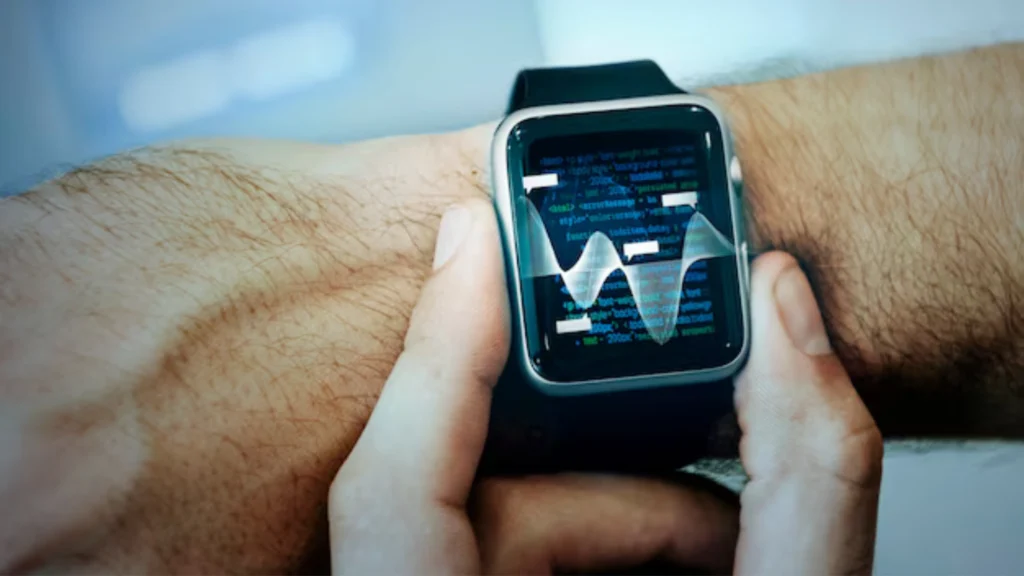
Let’s talk numbers. Not just any numbers – real research findings that show exactly how wearable health monitoring is changing lives. The data tells a fascinating story about what these devices can really do.
Clinical Trial Results
Here’s something that caught my eye: Looking at 30 different clinical studies, 50% of trials showed real improvements in patient health. The research focused mainly on chronic conditions – type 2 diabetes (13%), Parkinson’s disease (10%), and chronic lower back pain (10%) led the pack.
But it gets better. These devices don’t just work in controlled settings – they’re proving their worth in real life. Think about what this means for healthcare:
- Catching drug safety issues before they become problems
- Getting medication doses just right
- Measuring disease activity more accurately
- Trading guesswork for hard data
Patient Outcome Improvements
The hard truth? Numbers don’t lie, and these numbers are impressive. Take stroke prevention – wearable devices cut stroke rates by 20 to 23 per 100,000 person-years. Sure, there was a trade-off with slightly more bleeding events (20 to 44 per 100,000 person-years), but let’s put this in perspective.
Want to know the real impact? These devices added between 226-957 quality-adjusted life years per 100,000 people compared to no screening at all. Traditional methods helped too, but wearables? They’re in a league of their own.
Wearable Technology Healthcare: Cost-Effectiveness Studies
You might be wondering – does all this technology actually save money? A deep dive into studies from 2012 to 2023 looked at everything from breathing monitors to fall detectors.
Here’s what they found: The best screening approach using wearable heart monitoring tech costs about $57,894 per quality-adjusted life year. Sounds like a lot? Actually, it’s well under the $100,000 threshold that healthcare systems consider worthwhile.
The savings show up everywhere. Pedometer-guided pulmonary rehab saved €76.3 per patient compared to traditional programs. Even telerehab showed impressive numbers, costing £1,185 less per person to deliver.
Sure, the exact value depends on things like what device you’re using and where you live. But one thing’s clear – while we’re still gathering evidence, the numbers we’re seeing are pretty encouraging for healthcare providers and policy makers.
Data Integration and Wearable Technology Healthcare Systems

Let’s face it – getting all these wearable devices to talk to our healthcare systems isn’t just a nice-to-have anymore. It’s becoming as essential as having patient records. Health systems are racing to keep up, using Electronic Health Records (EHR) to make sense of all this data.
Electronic Health Record Integration
Think of EHRs as the universal translator between your wearable device and your doctor’s office. This connection isn’t just about convenience – it’s about keeping an eye on your health in real-time. Right now, different companies are using their own “languages” to make this happen, kind of like having different phone chargers for different brands.
Getting everything to work together takes some serious planning:
- Figuring out what needs to be done and how
- Getting the tech experts involved
- Making sure everything’s safe and legal
- Testing until it works perfectly
Here’s what’s really exciting: Doctors now get these amazing dashboards showing everything about your health in one place. It’s like having a mission control center for your well-being.
Security and Privacy Considerations
Now, here’s where things get serious. Remember when we used to worry just about keeping our social media private? With health data, the stakes are much higher. Hospitals need fort-knox-level security for these devices. The hard truth? HIPAA only protects your health data when it’s in your doctor’s hands.
Privacy isn’t getting any simpler as more people jump on the wearable bandwagon. Hospitals often need completely separate networks just for these devices. With 34% of Americans using wearables, keeping data safe isn’t just important – it’s crucial.
Want a wake-up call? A recent breach exposed over 1 million patients’ data from one medical device company. If that doesn’t make you think twice about data security, I don’t know what will.
Standardization Efforts
The Electronics and Telecommunications Research Institute (ETRI) is working hard to set global rules of the road for these devices. Think of it like creating universal traffic laws – everyone needs to follow the same rules to keep things running smoothly.
But we’re facing some real challenges:
- Different companies using different data formats
- No universal language for sharing information
- Keeping everything private while making it useful
Here’s some good news: The International Electrotechnical Commission is stepping up with standard ways to test these devices. Even better, the Consumer Technology Association (CTA) and American College of Cardiology are teaming up to help manufacturers speak doctor.
The National Institute of Mental Health gets it – we need standards for collecting and organizing this data. Without them? All that valuable information just sits there, unable to help future research. They’re looking at success stories like DICOM (think universal language for medical imaging) to show how we can share data while companies keep their secret sauce.
Wearable Technology Healthcare: Patient Success Stories and Outcomes
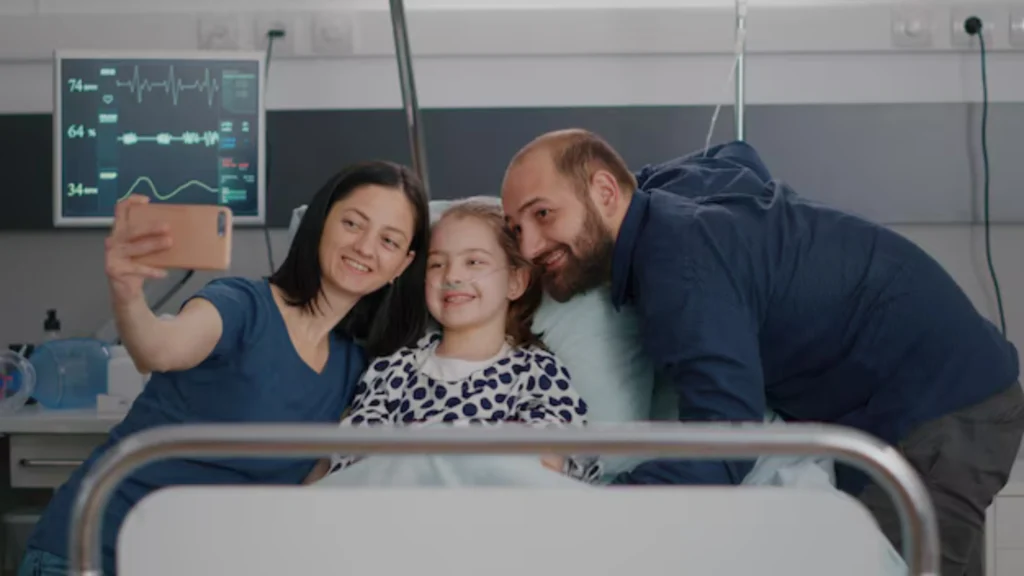
Let’s talk about real people and real results. You know how some doctors were skeptical about wearable devices at first? Well, the stories I’m about to share might change your mind about what these devices can really do.
Life-Saving Interventions
Here’s a story that gives me chills. A 25-year-old woman couldn’t figure out why her heart kept racing for years. Thanks to her smartwatch tracking her heart rate and ECG, doctors finally spotted what was wrong – supraventricular tachyarrhythmia – and fixed it with ablation. Think about that – a watch helped solve what years of doctor visits couldn’t.
Want another example? A 60-year-old man with a tricky heart rhythm stayed out of the ER just by sharing his smartwatch ECG data with his doctors. They tweaked his medications based on what they saw in real-time, keeping him healthy at home.
Quality of Life Improvements
The numbers tell an amazing story here. A whopping 86% of patients say these devices have made their lives better. Here’s how they’re making a difference:
- Finally understanding their health issues
- Getting their medications just right
- Seeing doctors without leaving home
- Having better conversations with their healthcare team
You know what really gets me excited? These devices are giving people with chronic conditions their dignity back. Instead of invasive procedures, they’re getting the same information in a way that lets them live normal lives.
Long-term Health Management
Ready for something surprising? 80% of patients are actually eager to use this technology in their care. That’s not just acceptance – that’s enthusiasm.
Remember when managing a chronic condition meant constant doctor visits? Those days are fading fast. Studies looking at thousands of patients with 18 different chronic conditions show these devices are changing the game. They’re keeping track of:
- Blood sugar levels 24/7 for diabetes patients
- Heart patterns in cardiac cases
- How people with neurological conditions move
- Sleep and activity patterns
Here’s what’s really powerful: These devices aren’t just tracking – they’re motivating. Daily step challenges, personal goals, instant feedback – it all adds up to people actually sticking to their treatment plans.
Want to know what patients think? 47% of them see these devices as a huge step forward in healthcare. And they’re right – fewer hospital stays, shorter visits when you do need them, and care that’s tailored just for you. That’s not just technology – that’s transformation.
Future Developments in Medical Wearable Technology Healthcare
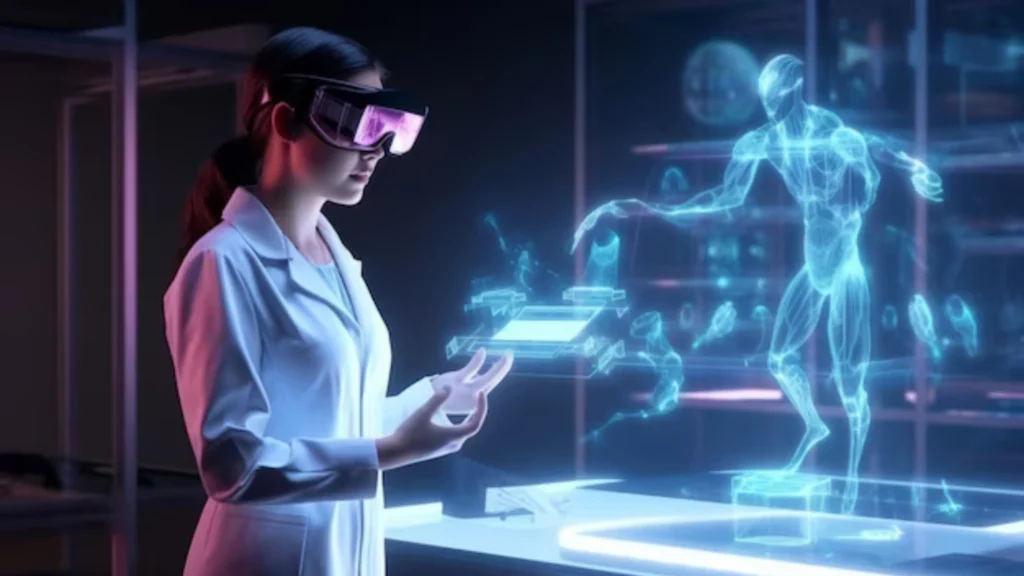
Let’s peek into the future of medical wearables. The technology we’re seeing emerge isn’t just impressive – it’s changing how we think about healthcare itself. Ready to see what’s coming?
Emerging Technologies
Remember when a fitness tracker just counted steps? The next wave of wearables makes those look like calculator watches. Brain-computer interfaces (BCIs) are leading the charge, tackling everything from chronic pain to epilepsy and paralysis.
Here’s what’s hitting the market:
- The Withings Omnia Health Scanner – think Swiss Army knife for health monitoring
- Novosound’s ultrasound wearable – blood pressure tracking without the cuff
- FlowBeams BoldJet – saying goodbye to needles with laser-powered injections
- Eli Health’s Hormometer – hormone tracking right from home
And that’s not all. Smart fabrics and skin-like sensors are getting so comfortable, you might forget you’re wearing them. These aren’t just gadgets – they’re opening new doors for delivering medicine and tracking health conditions.
Artificial Intelligence Integration
Here’s a mind-blowing fact: Fifty years ago, doctors tracked about seven things for ICU patients. Today? Try 1,300 data points. That’s where AI comes in – turning this data tsunami into useful insights.
What’s AI bringing to the table?
- Taking the data burden off healthcare providers
- Finding patterns humans might miss
- Predicting health issues before they happen
- Helping doctors make decisions faster
The hard truth? Without AI, all this data would be overwhelming. But with it, doctors can spot trends across thousands of patients and countless data points. This is huge for managing chronic diseases and dealing with healthcare staff shortages.
Wearable Technology Healthcare: Personalized Medicine Applications
By 2025, we’re not just talking about one-size-fits-all healthcare anymore. We’re looking at personalized plans that work for everyone, even groups that traditionally haven’t had great access to healthcare.
Take glucose monitoring – these devices are getting more accurate and affordable, working right with your smartwatch. And get this – new sensors will even track things like electrolytes and stress hormones through your sweat.
Here’s what personalized medicine through wearables looks like:
Enhanced Disease Management: Your device won’t just track health data – it’ll be your personal health coach, giving advice on everything from exercise to diet.
Predictive Health Monitoring: Think of it as your body’s early warning system. These devices will spot potential problems – like irregular heartbeats or sleep apnea – before they become serious.
Integration with Healthcare Systems: All this information will flow smoothly to your healthcare team. But here’s the catch – we need to make sure it helps doctors without overwhelming them.
Let’s be real – there are still hurdles to jump. We need better standards and guidelines. But one thing’s clear: success isn’t just about cool technology – it’s about making sure it works for both patients and healthcare providers.
Conclusion
Remember when fitness trackers were just fancy pedometers? Those days are long gone. Wearable health technology has become as essential to modern healthcare as stethoscopes and blood pressure cuffs. From spotting heart problems to managing chronic diseases, these devices are proving their worth with real results and solid clinical evidence.
Sure, getting these devices to work smoothly with healthcare systems isn’t always easy. Privacy concerns? Standardization challenges? They’re real. But here’s what gets me excited: When it works, it really works. We’re seeing fewer hospital visits, more precise treatments, and better outcomes across every medical specialty. And the cost savings? They’re just icing on the cake.
Want to know what really matters? These aren’t just gadgets anymore – they’re lifelines. With AI and personalized medicine on the horizon, we’re just scratching the surface of what’s possible. Smart healthcare providers aren’t asking if they should embrace this technology – they’re asking how fast they can implement it. After all, in a world where patient care keeps getting more complex, who wouldn’t want tools that make it simpler and more effective?


